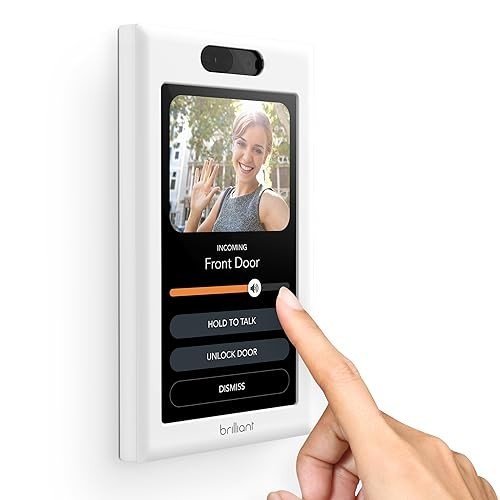The Ultimate Guide to Buying LED Lights in the UK
In recent years, LED lights have risen in popularity due to their energy effectiveness, longevity, and flexibility. As the UK moves towards more sustainable energy practices, lots of house owners and businesses are making the switch from traditional incandescent and fluorescent bulbs to LED lighting. This article intends to guide readers through the procedure of buying LED lights in the UK, highlighting crucial considerations, advantages, and regularly asked questions.
Understanding LED Lighting
What are LED lights?LED represent Light Emitting Diode. Unlike traditional bulbs, LED lights generate light through a semiconductor. This technology is not just more energy-efficient but also produces less heat, minimizing electrical energy costs in the long run.
Advantages of LED Lights
Energy Efficiency
- LED lights use up to 80% less electrical energy than traditional incandescent bulbs.
- They convert nearly all the energy they take in into light rather than heat.
Durability
- Average life expectancy of LED lights is around 15,000 to 50,000 hours, considerably outlasting traditional bulbs.
Ecological Impact
- Reduced energy usage decreases carbon footprints.
- LEDs include no hazardous products like mercury, making them eco-friendly.
Variety and Versatility
- Readily available in various shapes, colors, and brightness levels appropriate for different applications.
Immediate Lighting and Dimming Capabilities
- LEDs light up quickly and can be dimmed for specific lighting requirements without flickering.
Secret Factors to Consider When Buying LED Lights
When searching for LED lights in the UK, it's vital to think about different factors to ensure you acquire the best item for your needs.
1. Brightness Level
Brightness in LED lights is measured in lumens. Greater lumens suggest brighter lighting. Here's a quick reference:
| Wattage (Traditional Bulb) | Lumens (LED Equivalent) |
|---|---|
| 40W | 450 |
| 60W | 800 |
| 100W | 1600 |
2. Color Temperature
LEDs come in numerous color temperature levels, measured in Kelvin (K). Here's a breakdown of color temperature levels:
- Warm White (2700K - 3000K): Ideal for homes, produces a cozy environment.
- Cool White (4000K - 4500K): Suitable for workspaces, supplying a tidy, intense light.
- Daytime (5000K - 6500K): Mimics natural daylight, best for outdoor use or specific job lighting.
3. Dimmability
Not all LED lights are dimmable. If you want the versatility to adjust brightness levels, ensure that the LEDs you pick are compatible with dimmer switches.
4. Component Compatibility
Consider the kind of fixtures in which you'll be positioning the LEDs. Typical fitting key ins the UK consist of:
- BAYONET (B22): Commonly utilized in households.
- Edison Screw (E27, E14): Popular for both decorative and general lighting.
- GU10: Often used for spotlights and recessed lighting.
5. Energy Rating
Examine the energy score of the LED light. Most LED bulbs will be appreciated (A+ or higher) for energy effectiveness.
6. Lifespan & & Warranty Buying quality LED lights typically includes service warranties ranging from 1 to 5 years. A longer guarantee might indicate a more durable item.
Where to Buy LED Lights in the UK
LED lights are extensively offered throughout various platforms, consisting of:
Physical Stores:
- DIY and home enhancement shops like B&Q, Homebase, and Wickes.
- Grocery stores such as Tesco and Sainsbury's.
Online Retailers:
- E-commerce giants like Amazon and eBay.
- Specialized lighting sites like LED Hut or Lights4Fun.
Local Electrical Suppliers:
- Independent electrical supply stores frequently provide expert guidance.
Recommended Brands
When buying LED lights, think about reliable brand names known for their quality and innovation, such as:
- Philips
- Osram
- Sylvania
- GE Lighting
- IKEA
Frequently Asked Questions (FAQs)
1. Are LED lights really worth the financial investment?Definitely. While Industrial Lamps UK may have a higher in advance expense compared to traditional bulbs, their energy effectiveness and long life expectancy suggest they will conserve you money on energy bills in time.
2. Can I utilize LED lights in my existing fixtures?Yes, as long as you choose bulbs suitable with your fixtures (BAYONET, Edison Screw, GU10, and so on), you can easily replace traditional bulbs with LEDs.
3. Why are some LED bulbs more costly than others?Cost distinctions can be attributed to brand name reputation, technology (such as smart functions), energy performance rankings, and guarantee periods.
4. Do LED lights release harmful radiation?No, LED lights do not produce ultraviolet or infrared radiation and are considered safe for home usage.
5. Can I recycle LED bulbs?Yes, numerous local councils have recycling programs for LED bulbs. Inspect local guidelines for disposal guidelines.
Buying LED lights in the UK is a smart choice for those aiming to save energy, decrease costs, and enhance their lighting services. By considering aspects such as brightness, color temperature level, fixture compatibility, and reputable brand names, buyers can confidently make informed decisions. Welcoming LED innovation is not just useful for individual families and businesses, but it likewise contributes to a more sustainable future for the environment. Whether you head to a regional store or search online, the transition to LED lighting is a step towards a brighter, cleaner world.

